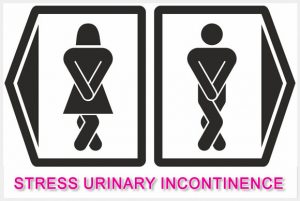 Urinary incontinence is a very common problem, and refers to an inability to reliably control the bladder. Incontinence is actually a symptom, rather than a condition in itself, and can have a wide range of underlying causes, or simply be the result of the aging process. It can happen in both men and women – though often for different reasons.
Urinary incontinence is a very common problem, and refers to an inability to reliably control the bladder. Incontinence is actually a symptom, rather than a condition in itself, and can have a wide range of underlying causes, or simply be the result of the aging process. It can happen in both men and women – though often for different reasons.
Types of Urinary Incontinence
Urinary incontinence can take several forms, and these include:
-
Stress incontinence, where movements that put stress on the bladder such as sneezing, coughing and exercise cause small amounts of urine to leak out.
-
Urge incontinence, where the urge to urinate is overly frequent, often causing sleep problems.
-
Overflow incontinence, where the bladder doesn’t empty fully during normal urination, leading to leakage at other times.
Some people experience a combination of these symptoms, and they can be temporary and irregular, or chronic depending on the underlying cause.
Causes of Urinary Incontinence
There are a wide range of things that can cause incontinence, including lifestyle factors, other medical conditions, and aging. This is one of the reasons why it is best to seek a diagnosis and treatment from a urologist.
In women, stress incontinence is more common, as it can often be the result of hormonal changes or a pelvic floor prolapse which can happen after childbirth. Women who have had hysterectomies and other reproductive surgery may also experience stress incontinence.
In men, particularly older men, a leading cause can be benign prostatic hyperplasia (BPH), otherwise known as an enlarged prostate.
Other causes in both male and female patients can include conditions as simple as constipation, through to more serious conditions like diabetes. Lifestyle factors such as being overweight or consuming diuretics like alcohol or caffeine too frequently.
Treatment can range from lifestyle changes and exercises, through to medication and surgery. You may need to undergo some tests, for example urine tests, a cystoscopy (where a tiny camera is used to look at the inside of the urethra and bladder) or testing of the bladder and bladder sphincter.
Because there are a lot of different types of urinary incontinence and different reasons why people are experiencing it, there are also a wide range of effective treatments that can fix the problem, or help you manage the symptoms better. Make an appointment today at 212-675-3186 if you are interested in resolving your urinary incontinence by finding the best approach for you!
